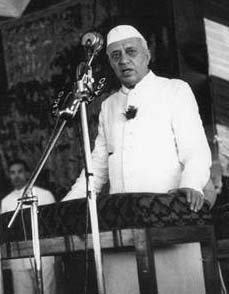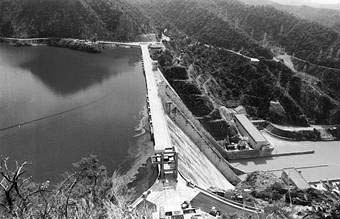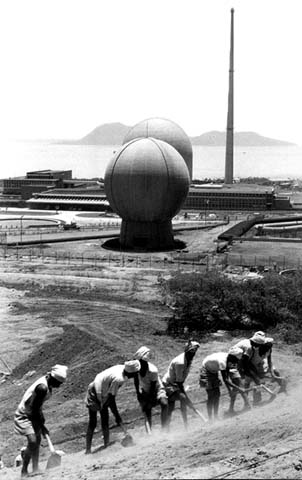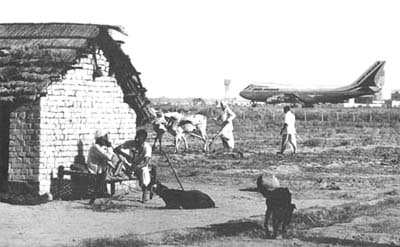Dec 25, 2025
Dec 25, 2025
 Post Independence India
Post Independence India
“Long years ago,
we made a tryst with destiny,
and the time comes now
to redeem our pledge…”
With these historic words, Jawaharlal Nehru stood on the ramparts of the Red Fort at Delhi and proclaimed the new Republic of India on the night of August 14, 1947. The largest democracy in the world came into being, symbolizing a new hope, a new promise to millions of people who had till then been under the British flag. The birth of the new nation also signaled forever the end of the British empire, which, having lost the jewel in its crown and substantially enfeebled at the end of the Second World War, would never again be the same world power.
But if there was joyous celebration in India, there was also enough cause for sorrow. The country had been divided into three, with India bounded on both sides by another state whose self-declared aim was to protect the rights of the Muslims of the subcontinent. This event led to the largest transmigration of population ever to take place in history, with millions of Muslims, Hindus and Sikhs from both sides of the border uprooted from their lands and homes, to go and settle in an alien land with which, in many cases, they had few ties. The communal riots that accompanied this displacement must go down in history as the bloodiest hand-over of power ever.
The flames of partition subsiding, the new Indian State was faced with a gargantuan task. There was debilitating poverty. There were millions of refugees without a home. The State was short of almost everything, from food to medicines, from industry and infrastructure to skilled manpower, from housing to distribution systems for relief and aid. A massive nationwide program, thus, was launched.
Housing for the refugees, improvement of conditions in villages and rural areas, the building of industry and institutions were only some of the challenges faced by architects and planners in India. Compounding this was the fact that very few of the post-independence Indian architects had any experience with dealing with projects on such a massive scale, they being mostly employed during British times as draftsmen and working under British architects.
Thus it came to pass that most of the large and prestigious projects in post-independence India continued to be directed by foreigners of all nationalities. This was not uncommon, with a transition period being the norm in most professions, from the military to the administration and bureaucracy.
In architecture and urban planning, for example, Otto Koenigsberger was responsible for a large amount of rebuilding and reconstruction work, Albert Mayer the American oversaw many village development projects, Joseph Allen Stein (also American) stayed on in India and later became almost single-handedly responsible for a style of architecture that created a whole new school of disciples, and A.L. Fletcher of the ICS would go on to be responsible for the initial studies for the new city of Chandigarh.
In engineering and construction, the State invested massively in heavy industry and giant infrastructural projects. It was at this time that the foundations for various public  undertakings were laid (in electricity, coal, metals, and fuel, for example). These would go on to be, in most cases, loss-making behemoths some years down the line, but at the time they laid a substantial industrial base. This aim was concomitant with Nehru’s policy of placing the West “on tap, not on top”, a policy which translated into investment in heavy industry, and providing at the same time protectionism to the fragile indigenous Indian industrial and crafts base. Giant infrastructure projects like the Bhakra dam in the Punjab were direct offshoots of this policy.
undertakings were laid (in electricity, coal, metals, and fuel, for example). These would go on to be, in most cases, loss-making behemoths some years down the line, but at the time they laid a substantial industrial base. This aim was concomitant with Nehru’s policy of placing the West “on tap, not on top”, a policy which translated into investment in heavy industry, and providing at the same time protectionism to the fragile indigenous Indian industrial and crafts base. Giant infrastructure projects like the Bhakra dam in the Punjab were direct offshoots of this policy.
India required new towns to house the displaced population of East and West Pakistan (now Bangladesh and Pakistan). Towards this goal, many additions were made to existing cities. Towns like Jullunder, Ludhiana, Amritsar and Ambala in the Punjab were enlarged to accommodate the new population, and Delhi underwent as well massive new construction to house its immigrant population.
 But these additions were simply not enough, and besides, the state of Punjab, now partitioned in two, had lost its historic capital, Lahore, to Pakistan. Similar events had taken place further south, in Gujarat, and in the East. It was to create new capitals in these dispossessed states that the new cities of Chandigarh, Bhubhaneswar and Gandhinagar were built.
But these additions were simply not enough, and besides, the state of Punjab, now partitioned in two, had lost its historic capital, Lahore, to Pakistan. Similar events had taken place further south, in Gujarat, and in the East. It was to create new capitals in these dispossessed states that the new cities of Chandigarh, Bhubhaneswar and Gandhinagar were built.
There is a lot of criticism today about the decisions taken in post-Independence India: that the Nehruvian version of socialism ignored the development of private capitalism and instead placed too much reliance on state-controlled investment, giving rise to sluggish, ‘Hindu’ rate of growth and a corrupt, licence Raj. This is easy to say, given the benefit of hindsight.
But would it not be fair to also say that in a new nation where there were many opposing forces, a strong state was needed to ensure unity and a show of force (as that displayed in Hyderabad, Kashmir, the North-East and Goa), was ultimately a necessity to ensure that India as we know it today continued to exist?

It is remarkable that India remained united and one country politically in the turbulent years following independence, and retained and in fact strengthened its democratic character. It is this mixture of opposites that characterized the India of 1947, and continues to be its main feature today. To close, two photographs, shown above and alongside, from the period by the recently-deceased French photographer (and an Indophile) Henri-Cartier Bresson, speak for themselves, on the challenges and paradoxes of the India of 1947.
24-Oct-2004
More by : Ashish Nangia

|
excellent information |